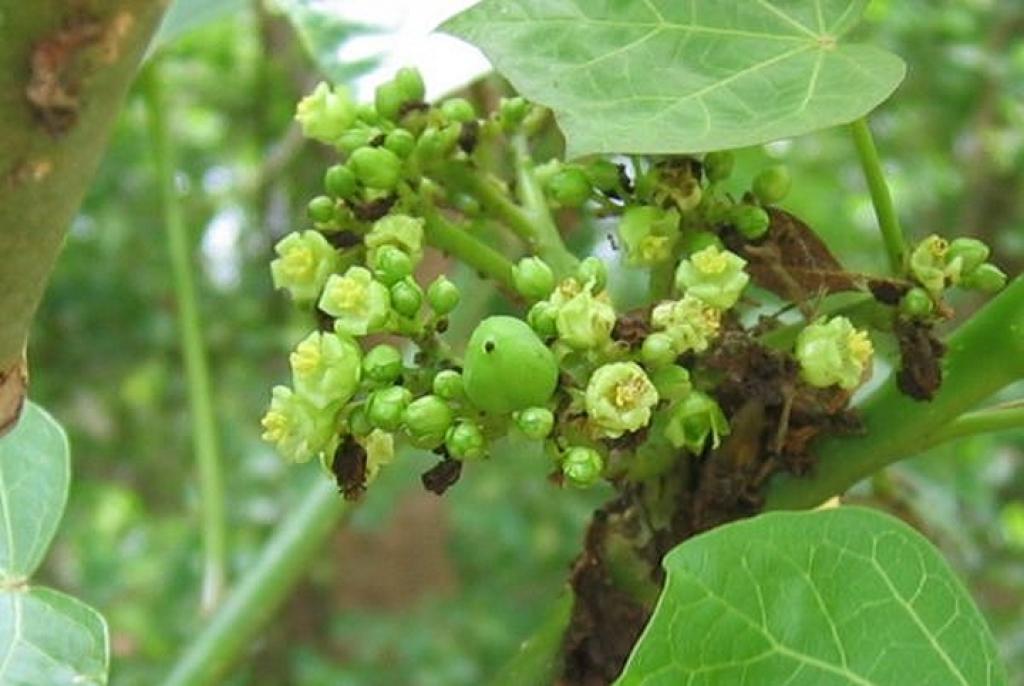In a proud moment for the Indian aviation industry, a blend of biofuel and aviation turbine fuel (ATF) was used to propel a SpiceJet Bombardier Q-400 flight between Dehradun and Delhi.

SpiceJet’s Chairman and Managing Director Ajay Singh said the 43-minute flight was a technological demonstration that bio jet fuel could be used in flights, and claimed that biofuel had the potential to reduce fuel costs by 15-20 percent.
While there is reason to be proud, it’s too early to celebrate, and here’s why.
Production of the fuel is still in the development stages. The 430 litres of HEFA (hydro processed ester and fatty acid) biofuel took four days to produce. But even this achievement took place after eight years of effort by Council for Scientific and Industrial Research, Dehradun along with Indian Institute of Petroleum (IIP). It’s not clear if oil refineries will be queuing up to buy the technology from IIP.
Jatropha seed, from which the biofuel was made for testing, was in the news nearly a decade back. Biodiesel from jatropha was supposed to be India’s reply to the Arab world’s crude oil production. This prompted a number of smaller companies venturing into the space. However, even after a decade, we have only six plants and their operation level is less than 30 percent. Reports say that research trials have failed to build a commercially viable biodiesel industry around jatropha.

In fact, jatropha oil is costlier than other biofuel oils. While oil from jatropha is around Rs 43-48 per litre, depending on the seed quality, that from karanj and ingudi fruits costs Rs 35 per litre. Further, when compared aviation turbine fuel (ATF), jatropha fuel will only be cheaper when crude oil price crosses around $60 a barrel. For most of 2017, with oil at $55-60, ATF was available between Rs 45-55 per litre. At these levels, it would not make much sense to use biofuel. In fact, the difference is even more stark because the ATF price includes taxes and biofuel is exempt.
As Minister of Road Transport and Highways Nitin Gadkari said, inedible oil seeds like jatropha have low per-acre productivity. Efforts by various state governments to make farmers grow jatropha have not yielded results. The long gestation period and availability of alternatives have prevented farmers from growing this plant, which can give fruits for 30 years.
Though jatropha can grow in dry areas and needs little maintenance, its low yield is a big dampener. Further, a sizeable quantity of seeds can be collected only after the fifth year. Few farmers will have spare land to grow a crop and wait for five years before making money.
As IIP official Anjan Ray said on the sidelines of the first flight, nearly 70 percent of the cost of the biofuel is the feed cost.
Thus, a policy similar to sugarcane, where concentrated growing by a group of farmers with a refinery close by to extract and refine oil will be needed. This is easier said than done, given the time it takes for the government to come out with policies and farmers to adopt it.
The government had planned to make jatropha fuel available across the country by 2017, but had to drop the idea by 2013 as the plant was found to be farmer-unfriendly. Limited use of jatropha seeds, unlike sugarcane, results in few takers.
While the first flight may be successful, it might well be some time before the second one takes off.